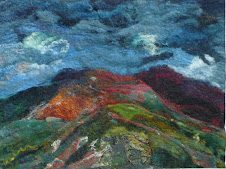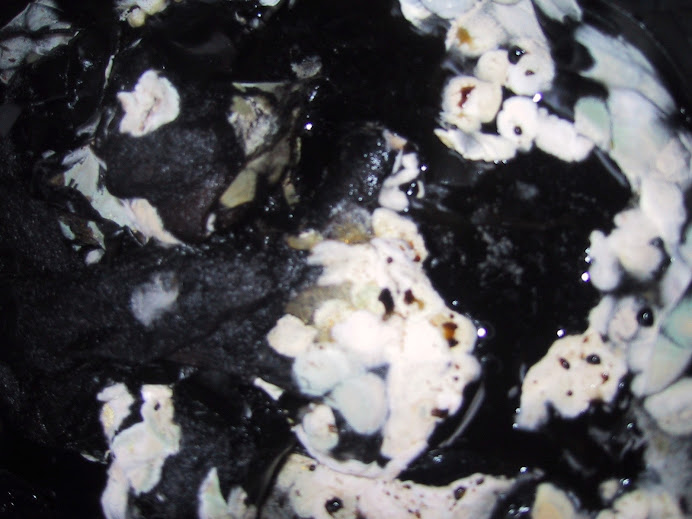Well here goes:
As I am interested in creating inks which are brightly coloured indeed intense I have tended to go for the inks used in medieval manuscript painting as these appear to have been the brightest most intense colour.
Daniel Thompson feels that colour could be applied to parchment ( made form skin), to wooden panels or to walls. By and large the colour that could be used to apply to parchment was described as ink as it could flow through a nib or be painted with a fine brush. However the issue of light fastness does come into play. Dyes used as inks in manuscripts did not have to be so lightfast as dyes used on panels or on fresco's.
Ink comes from "incaustum" meaning burnt in.
Lampsoot Ink The ink of Antiquity
A Suspension of Carbon
The oldest form of ink, known to Egyptians, was soot, water and gum. Lampsoot was valued because the particle size was very small so required no further grinding and was made by letting a flame play on a cold surface. The Chinese however developed lampsoot ink to a very high standard and an artform too using lampsoot, water and gum and various other ingredients to help it run smoothly and smell nice. It took long beating and was designed for brushing and painting on the very absorbent surfaces of handmade paper. The art side of it happened in as Chinese ink was dried and compressed and set in wood moulds with carved pictures.Lampblack and gum does not bite into surfaces as does gall ink but sits on the surface and if the gum becomes brittle or has not been prepared properly then the writing disappears.
In the medieval age carbons were made from charcoal from young shoots of grape vine, but others such as peach stones were highly favoured.
Black Gall0 -Tannic inks
These are the suspension of black organic salts of iron mixed with other salts which become black after use.
Oak trees form galls or gallnuts as a result of a sting of an insect and thse galls are full of tannic and gallic acid which Daniel Thompson says can be soaked out of the galls. Jenny Dean in Wild Colour, say to crush, soak until they are soft and then to simmered for an hour to extract the tannin. When these acids are mixed with iron salts such as ferrous sulphate ( rust) a purply black ink results.
Modern techniques are so good that the black is not visible because of the purity of the ingredients, but in medieval times some black colour was produced otherwise the black appears on oxidation and improves with time. Some gum arabic is usually added to thicken and to improve the flow.
Well that is all I have time for tonight .






















Thanks for the report about this interesting book.
ReplyDeleteRe. the different qualities of different carbons, this reminds me of the different qualities that emerge from wood ash when used as a pottery glaze. I have a lovely little ceramic tea caddy made by Stephen Parry who uses ash glazes, and he explained that a touch of clear blue in an otherwise green glaze on my little pot emerged sometimes with the ash of apple tree wood. I know this is moving away from the subject of ink a bit, but the point is that there are trace minerals we can't see in the carbon that have subtly different effects. Same of course with natural dyes.
These subtle differences are one of the reasons why I love natural dyeing!
ReplyDeleteWhen I ahve time I shall put up the stuff about red inks too.
Thank you Helen, for summarizing the information about inks, seems very simple, how you put it, but of course I am sure it is not.
ReplyDeleteActually Leena it is simple! It is so ancient too, and may predate paper becasue the earliest inks were probably used to rub into heiroglyphics to make them easier to see. It is really just that the Chinese refined the technique to such an extent that it seems to have become tied up with status as a scholar etc.
ReplyDeleteVery interesting. I'm glad you went ahead with this post! Life would be pretty boring if there wasn't something to learn and others to share it with.
ReplyDeletewhat I wonder, is how one collects lamp soot for ink making. We have used kerosene lamps from time to time and if the wick is turned up too high, soot collects quite quickly on the chimney. I wouldn't know how to collect it in any quantity however.